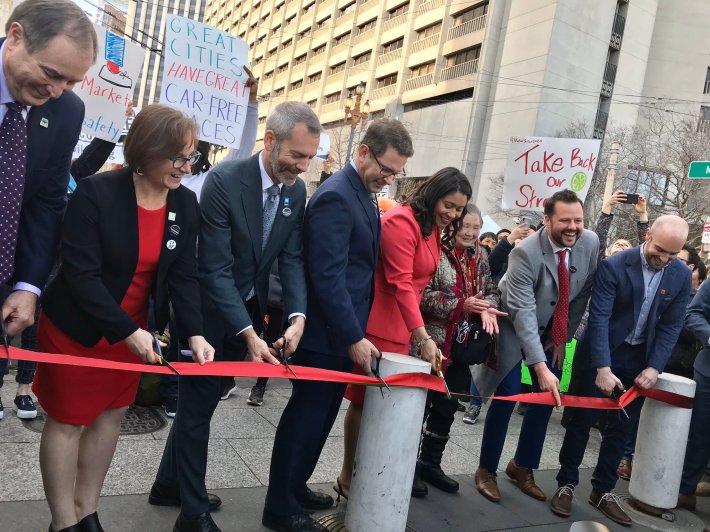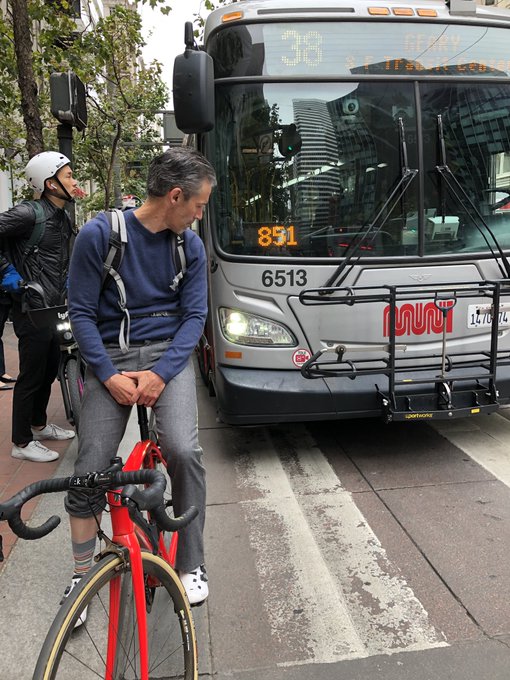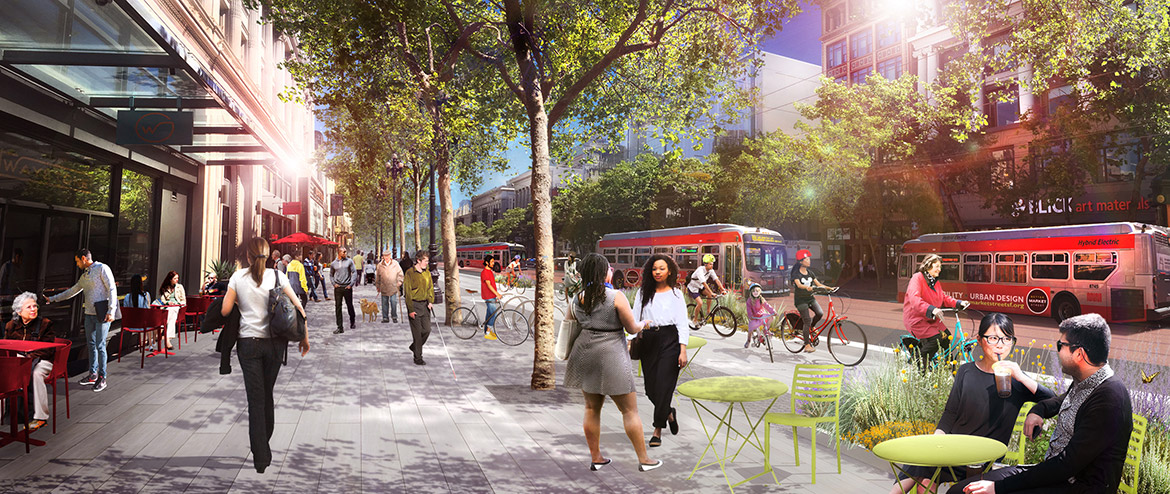The headline in the San Francisco Standard story "‘Doom loop’ cure? Mark Farrell calls for bringing cars back to Market Street" is just wrong. Nobody can bring cars back to Market Street because they never left.
First, Farrell appears to be playing a populist game with car-brains who feel they have the God-given right to drive anywhere and everywhere, using streets maintained at public expense, 24/7. In reality, anybody who thinks the ban on private cars on roughly two miles of Market Street is responsible for or tangibly contributes to the economic woes of downtown San Francisco, given all the other factors, is on an economic acid trip.
But it's essential to understand what the current mayor has actually overseen on Market Street. The Standard and other news outlets generally get it right in the body paragraphs of their stories: the Market Street ban is actually only on private cars. But just going by headlines and chatter on social media it's pretty clear most people don't understand that Market Street is not and never was car-free.
City cars, taxis, delivery trucks, police and fire on non-emergency runs, commercial vehicles, and of course buses are still jogging for space with cyclists. And although it's nothing like before, there are still private cars too, since the ban is not always enforced.

People forget that the private car ban was celebrated at the start of 2020 because it was supposed to be the kickoff of the "Better Market Street" project, a planned total makeover of San Francisco's iconic thoroughfare. It was preceded by millions of dollars in planning, worker hours, outreach meetings, and community support to devise a blueprint for sidewalk-level protected bike lanes, delivery zones, and dedicated transit lanes to make a safe, walkable, livable street that would be the envy of the world. By designing to international best practices, it was to rival the safety of the main streets of Dutch and other European, bike-friendly cities.
But months later the "Better Market Street" project was gutted by then-incoming SFMTA head Jeffrey Tumlin and London Breed's administration. The sidewalk-level separated bike lanes were cynically removed under the cover of COVID-era "cost-cutting."
None of the stated justifications for eliminating the bike lanes from what this publication renamed the "Bummer Market Street" project made any sense, especially after COVID-era federal assistance and the passage of Prop. L. And given what followed, with the revelations that Mayor Breed was attempting to eliminate the slow streets program behind the scenes (while still supporting it publicly), and the sabotage of Valencia Street's protected bike lane project as well, Bummer Market Street fits a clear pattern. The current administration simply isn't serious about safety for cyclists -- and is, in fact, sometimes just anti-cyclist.

Expecting people "of all ages and abilities" on bikes to continue to mix with cars, trucks, and buses on a wide thoroughfare such as Market is unacceptable. It's not safe and goes against fundamental principles of Dutch design. There's no magic that makes cabs, trucks, city cars, and buses less likely to mash a cyclist to death than a private car. Think of cyclist Mark Heryer who was killed by a Muni bus driver on Market Street in 2015. Or Thu Phan, who was run down and killed by a city worker on Market in 2016.
Yes, Market Street is safer with the reduced traffic volumes brought on by the combination of the private car ban and the local economic downturn caused by work-from-home and the shuttering of so many offices. If there are fewer cars (and fewer people) downtown there will be fewer tragedies.
And of course I want the private car ban to continue. But if some new administration is willing to build the promised, sidewalk-level protected bike lanes on Market Street after all, and at least one transit-only lane can be maintained, and the trade-off is private cars are allowed to return, then okay.
Ultimately, I don't care if drivers are public, commercial, or private. My concern is to keep cyclists and pedestrians physically separated from their deadly machines as much as possible. But who's driving, or why they're driving, makes no difference to the damage inflicted when a human body is struck by a two-to-twenty-ton car, bus, or truck.
***
Note: Streetsblog reached out to the Farrell campaign to find out if he supports protected bike lanes on Market Street. His answer: "My vision for Market Street is one that balances safety, public transit, and convenience for all road users and modes to inject more life into downtown. Some of the most famous promenades in the world in Paris, Barcelona, and Rotterdam have done it, and so can we.”
For the record, in 2015 the "Better Market Street" plan passed unanimously when both Farrell and Breed were Supervisors.






